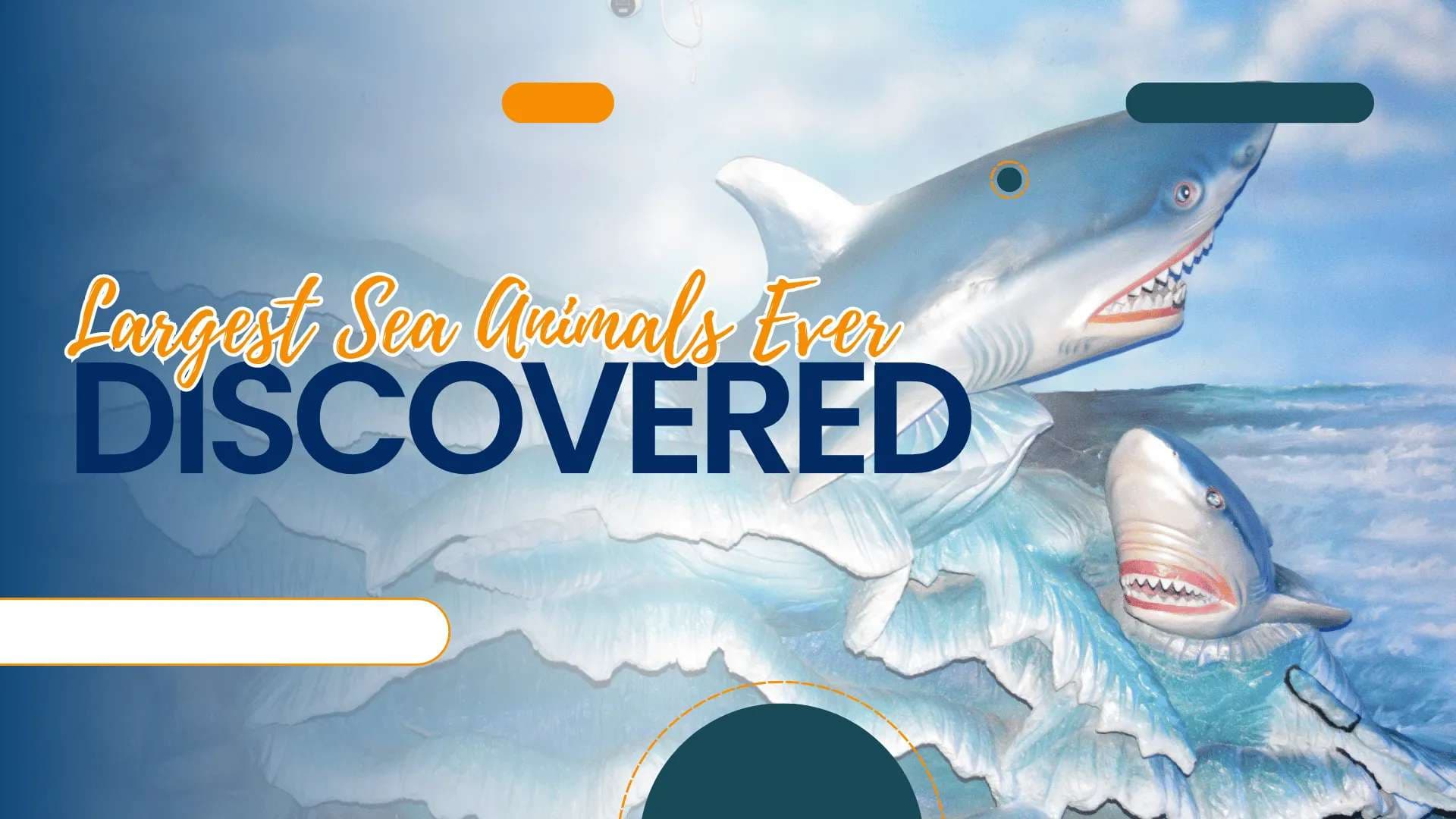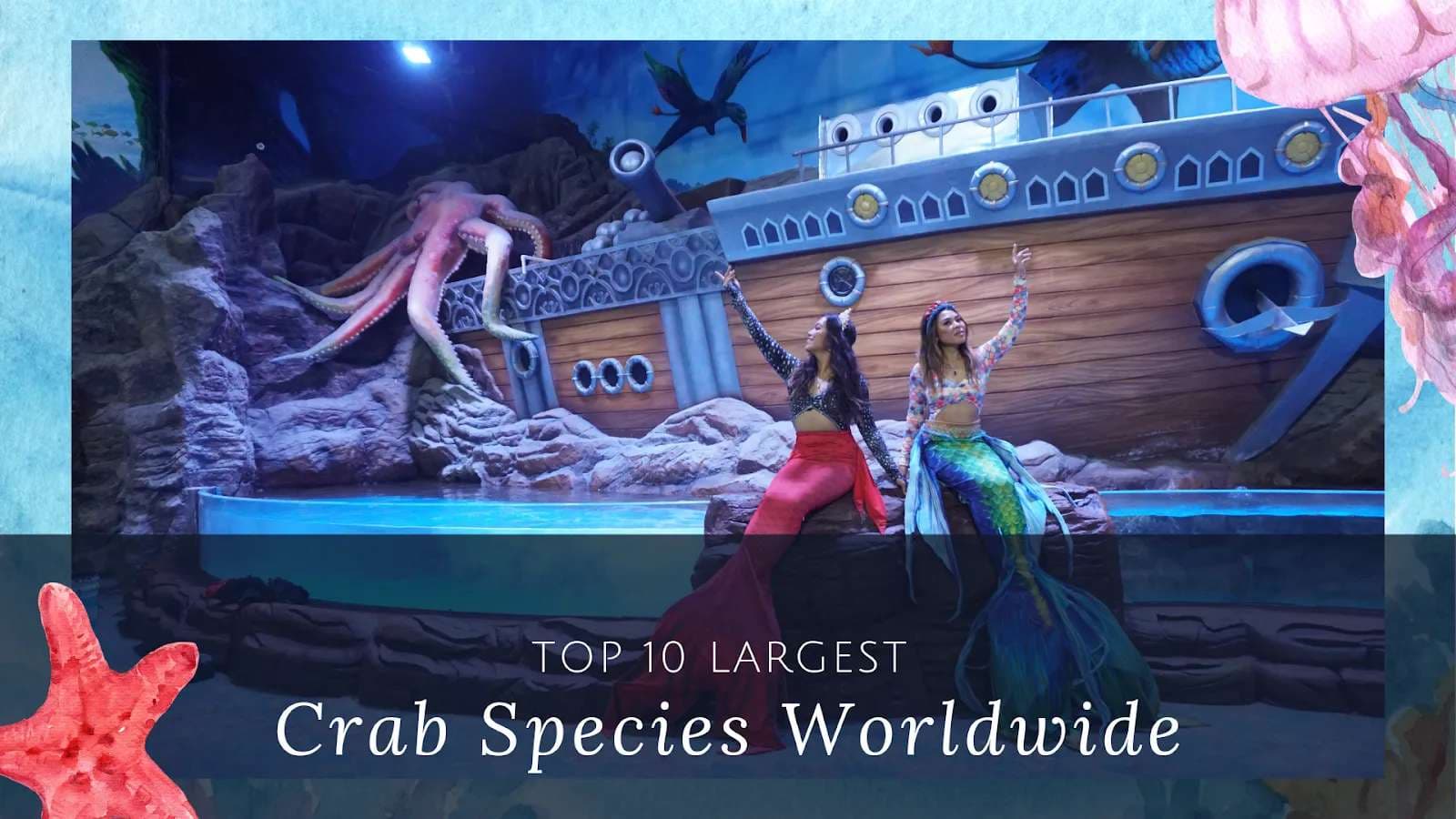
Largest Sea Animals Ever Discovered
Discover the biggest sea animal wonders like the Blue Whale and Colossal Squid. Understand their massive sizes and unique habitats. Dive in now!
When it comes to the biggest sea animal on the planet, the ocean has no shortage of giants. From jellyfish with trailing tentacles longer than a blue whale to deep-sea dwellers that stretch the limits of what we know, marine life continues to astonish us with its sheer size and mystery.
Despite centuries of exploration, the ocean still hides many of its secrets. It’s in this vast, mostly unexplored realm that nature’s largest animals thrive, some visible from boats, others only seen when washed ashore or caught on deep-sea cameras. Here’s a look at 10 of the largest sea animals ever recorded, based on total length or size, beginning with a jellyfish that defies all expectations.
TL;DR
- The ocean hosts some of the largest animals ever recorded, including the blue whale and lion’s mane jellyfish.
- Many of the biggest sea animals live in deep waters, making them difficult to study.
- Some, like the whale shark and giant Pacific octopus, are gentle giants, while others remain mysterious.
- Human threats, such as climate change and hunting, have endangered several of these marine species.
- These awe-inspiring creatures showcase the vast scale and diversity of ocean life.
1. Lion’s Mane Jellyfish
One of the most surreal creatures of the ocean, the lion’s mane jellyfish (Cyanea capillata) can reach lengths of over 120 feet, its trailing tentacles longer than a blue whale. With bell sizes ranging from 30–200 cm, the largest specimens exhibit up to 1,200 stinging tentacles grouped in eight clusters.
These gelatinous giants dwell in colder regions like the Arctic and North Atlantic and drift passively in ocean currents. Despite lacking a brain or central nervous system, they sense light and shadow through a nerve-net and capture prey using venom-filled stingers. Their ethereal mass of tentacles, while mesmerizing, poses entanglement risks, yet they remain one of the ocean’s most graceful yet mysterious forms.
2. Blue Whale
The blue whale (Balaenoptera musculus) is not only the biggest sea animal but the largest creature ever known to have lived. Growing up to 108 feet (33 m) and weighing 330,000 lb–400,000 lb, its heart alone tips the scales at nearly 400 lb and is the size of a small car.
These behemoths filter massive amounts of krill through baleen plates, up to 12,000 lb a day, sustaining their colossal bodies. Their vocalizations, at around 188 decibels, can travel as far as 1,600 km underwater. Once devastated by whaling, populations are rebounding slowly, yet threats like ship strikes and entanglement persist.
3. Sperm Whale
The sperm whale (Physeter macrocephalus) reigns as the biggest toothed predator, reaching nearly 80 ft (24 m) and possessing the largest brain of any animal, 7–9 kg. With impressive diving skills, they descend over 3,000 ft, holding their breath for up to two hours.
Their echolocation clicks reach 230 decibels, used to hunt deep-sea squids and navigate in darkness. Once heavily hunted for spermaceti oil, sperm whale populations have now stabilized in some areas, though they still face sperm theft threats and disturbance from whale-watching noise pollution.
4. Whale Shark
The whale shark (Rhincodon typus) stands as the planet’s largest fish at approximately 62 ft (18.8 m). Gentle and majestic, they feed passively on plankton, small crustaceans, and nekton by cruising with mouths wide open to filter-feed, and they might also target bottom-dwelling prey where available.
Renowned for their distinctive spots, whale sharks are often encountered by divers in tropical waters. Despite their docility, they are recognized as endangered, threatened by coastal development, boat collisions, and overfishing.
5. Basking Shark
Next in line, the basking shark (Cetorhinus maximus) can reach lengths of 40–45 ft (12–15 m) and weigh up to 13,000 lb. These slow-moving giants skim the water’s surface, filtering up to 130,000 gallons of water per hour through highly developed gill rakers to consume copepods and fish larvae.
Often mistaken for dangerous predators, they are harmless to swimmers and considered vulnerable, though sightings can indicate healthy plankton levels in their ecosystems.
6. Giant Squid
The giant squid (Architeuthis spp.) is a legendary deep-sea predator that can span up to 40 ft (12 m). Its monstrous tentacles, stretching over 30 ft, are equipped with powerful hooks for capturing prey in the abyss.
Long considered mythical, believed to be the inspiration for tales like the Kraken, the first live footage emerged only in 2012 and 2019. Most data comes from dead specimens or deep-sea encounters, as live sightings remain rare.
7. Giant Pacific Octopus
The giant Pacific octopus (Enteroctopus dofleini) can spread to nearly 32 ft (9.8 m) and weigh over 600 lb, though average specimens measure around 16 ft, 110 lb. Known for impressive intelligence, they can solve puzzles, open jars, and even differentiate human caretakers.
They use chromatophores to blend into surroundings in a fraction of a second and release ink to distract predators. They dwell in Pacific temperate waters and are favorites in aquariums for their remarkable behavior.
8. Oarfish
Commonly dubbed the “sea serpent,” the giant oarfish (Regalecus glesne) is the longest bony fish, reaching up to 36 ft (11 m). Their ribbon-like form and rare deep-sea sightings (up to 3,300 ft deep) fuel oceanic legends.
They live solitary lives in the pelagic zone and surface mainly when sick or dying. Sightings are rare but often viral when they occur.
9. Ocean Sunfish (Mola mola)
Also known as mola mola, the ocean sunfish is a bizarre, flattened fish weighing up to 5,000 lb and measuring around 11 ft (3.3 m). It lacks a proper tail and relies on dorsal and anal fins to swim, with a diet focused on jellyfish and zooplankton.
These fish are frequently seen basking near the surface on their sides, possibly to warm up after deep dives or to attract birds to remove parasites.
10. Japanese Spider Crab
The marine arthropod king, the Japanese spider crab (Macrocheira kaempferi), can stretch out to a staggering 12 ft leg span (3.7 m) . These scavengers live up to 100 years and roam the Pacific Ocean floor.
Their long legs and orange shells make them look otherworldly, but they are harmless to humans and play an essential role in cleaning the seafloor ecosystem.
While most of these giants live deep beneath the waves, you don’t have to travel far to experience the magic of marine life. If you’re in Bangalore, there’s a spectacular way to explore beautiful sea creatures up close. right in the heart of the city.
Aquarium Paradise, Bangalore
Located in the heart of Bengaluru, Aquarium Paradise isn’t a sea creature but a window into oceanic wonders. Home to India’s longest 180° underwater tunnel (roughly 180 feet), it houses over 100 species, sea turtles, rays, sharks, colorful fish, and stunning interiors like the Jellyfish Room and indoor waterfalls.
Highlights include:
- Mermaid Shows at 1 PM, 3 PM, 5 PM & 7:40 PM daily
- Interactive feeding sessions and educational tanks
- A calming, photo-ready Ocean Window Lounge
It’s a perfect blend of awe and education, showing you ocean fauna up close while staying cool and relaxed.
Conclusion
The sea is home to some of Earth’s most astonishing creatures. These biggest sea animals remind us of the ocean's endless mystery and scale.
Back on land, you don’t need to dive miles offshore to experience this grandeur. Aquarium Paradise brings the thrill of the ocean to Bengaluru, an immersive way to encounter marine marvels, learn about conservation, and cool off in style.
Plan your visit to Aquarium Paradise today and embark on a journey through India’s longest underwater tunnel, meeting the ocean’s most magnificent creatures without ever touching saltwater.
More To Read

6.17.2025
Top 10 Largest Crab Species Worldwide
Compare the largest crab in the world like the Japanese Spider and Coconut Crab. Explore traits, habitats, and conservation efforts. Click to know more!

9.4.2025
10 Fun Places in Bangalore Where Kids Can Play, Learn & Explore
Find the best kids fun places near you in Bangalore! Explore activities that blend play, learning, and family time for a perfect day out.

5.22.2025
Explore the Mesmerizing Aqua Tunnel in Bengaluru
Discover Bengaluru's Aqua Tunnel, a top tourist spot with stunning aquatic displays and interactive experiences. Plan your visit today!

5.16.2025
Mesmerising Little Mermaid Shows Near You
Discover the magic of Aquarium Paradise in Bangalore with its unique underwater tunnel, mermaid show, and interactive marine experiences. Get more info here.
